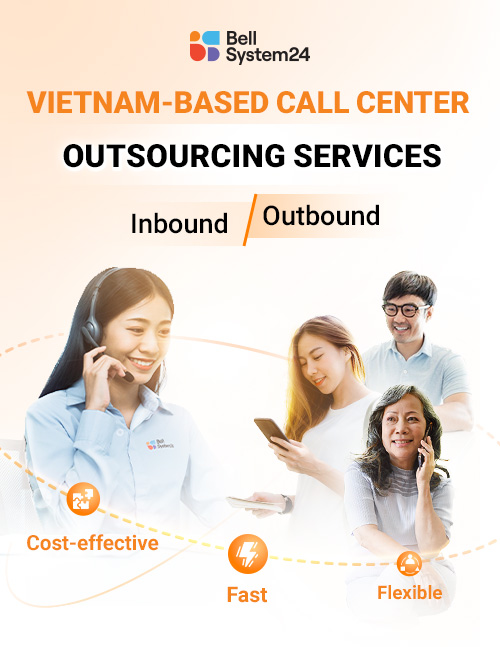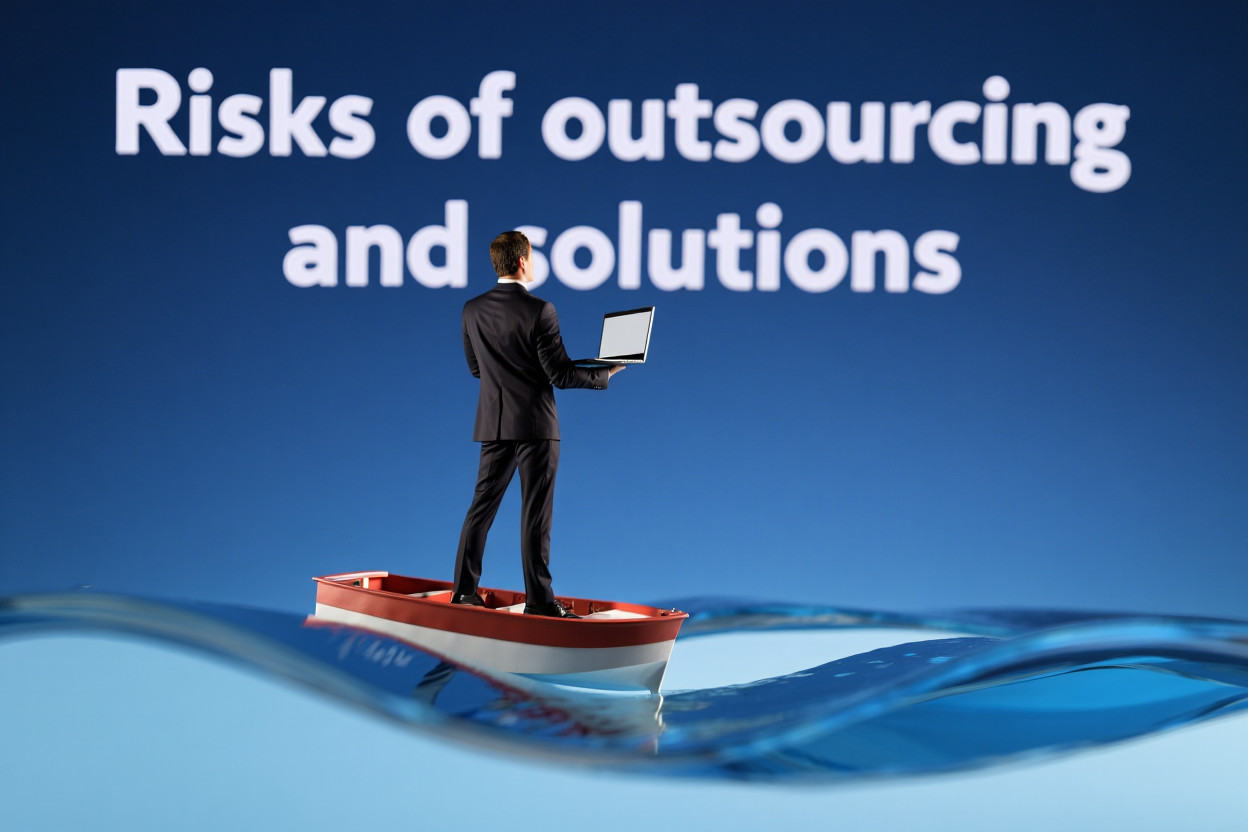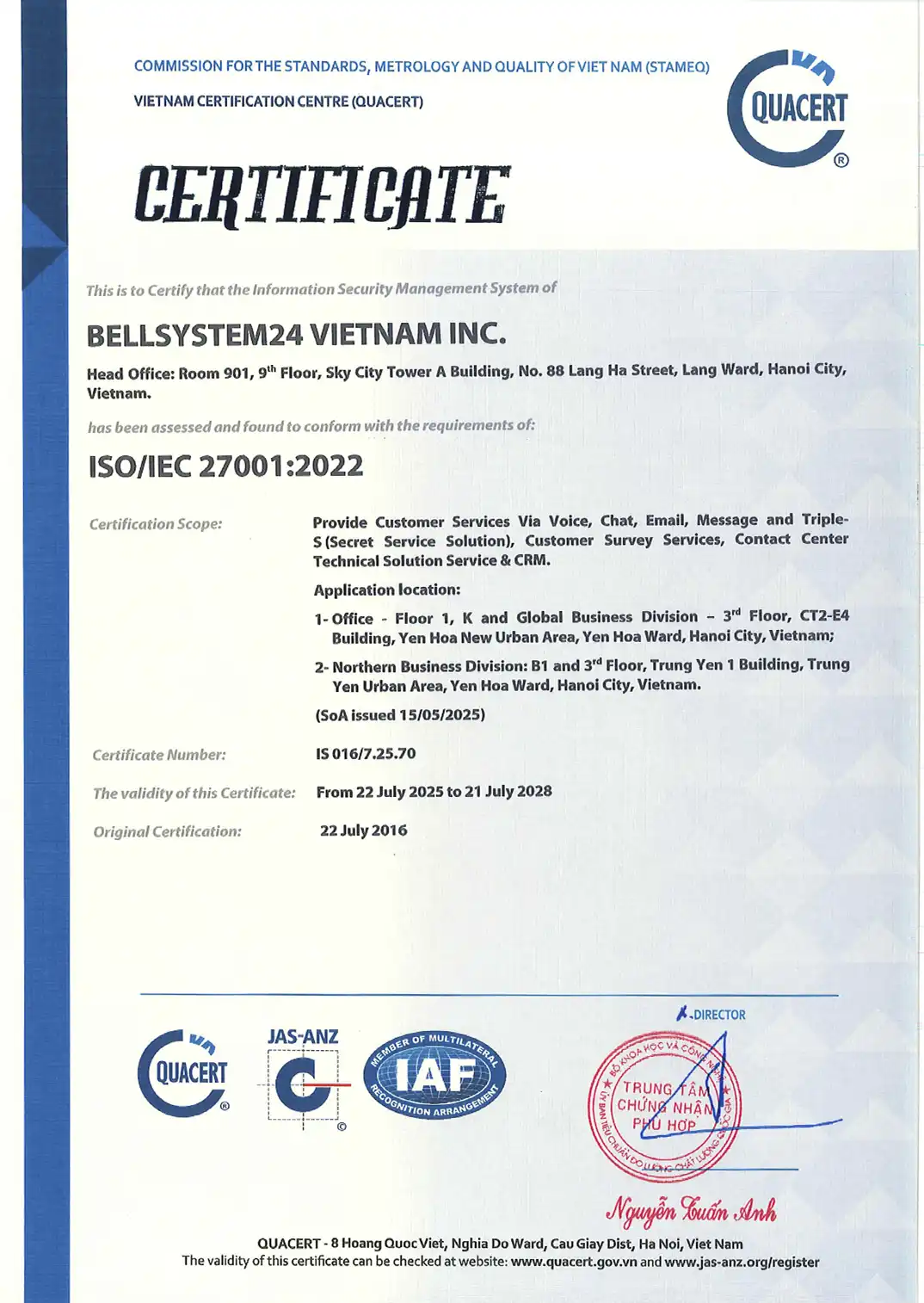In today’s competitive business landscape, making the right outsourcing decision can be the difference between scaling efficiently and struggling with operational bottlenecks. This comprehensive outsourcing decision guide will walk you through every critical aspect of Business Process Outsourcing (BPO), helping you make informed choices that drive growth and profitability.

The Strategic Framework: 4 Pillars of Outsourcing Success
1. Business Readiness Assessment
Before exploring outsourcing options, you must evaluate your organization’s readiness. This involves examining your current processes, identifying pain points, and determining which functions are suitable for external management.
Key indicators your business is ready for outsourcing:
- Repetitive, standardized processes that consume significant internal resources
- Non-core activities that distract from strategic initiatives
- Functions requiring specialized expertise you lack in-house
- Operations with predictable workflows and clear performance metrics
2. Cost-Benefit Analysis Matrix
Understanding the true cost implications goes beyond comparing hourly rates. A comprehensive analysis includes hidden costs, quality considerations, and long-term strategic value.
Comprehensive Outsourcing Cost-Benefit Analysis Matrix
| Cost Component | In-House Operations | Outsourced Operations | Annual Savings | Risk Factor |
|---|---|---|---|---|
| Direct Labor Costs | $50,000-80,000/employee | $15,000-25,000/employee | 60-70% | Low |
| Benefits & Insurance | 25-30% of base salary | Included in provider fee | $12,500-24,000 | Low |
| Payroll Taxes & Compliance | 7.65% FICA + taxes | Provider responsibility | $3,825-6,120 | Medium |
| Recruitment & Hiring | $3,000-15,000/position | Provider handles | $3,000-15,000 | Low |
| Training & Onboarding | $2,000-5,000/employee | Provider responsibility | $2,000-5,000 | Medium |
| Technology Infrastructure | $10,000-50,000 initial setup | Shared/Provider managed | $7,000-45,000 | High |
| Software Licenses | $1,200-5,000/user/year | Shared licensing model | $840-3,500 | Medium |
| Office Space & Utilities | $200-500/employee/month | Not required | $2,400-6,000 | Low |
| Equipment & Hardware | $2,000-8,000/workstation | Provider responsibility | $2,000-8,000 | Low |
| Management Overhead | 15-25% of total operation | 5-10% supervision | $7,500-20,000 | High |
| Quality Assurance | Internal QA team costs | Included in service | $30,000-80,000 | High |
| Scalability Investment | High upfront costs | Pay-as-you-scale | $20,000-100,000 | Very High |
| Business Continuity | Separate DR planning | Provider managed | $10,000-50,000 | High |
| Compliance & Auditing | Internal compliance team | Provider expertise | $15,000-40,000 | Medium |
| Performance Analytics | Additional tools/staff | Built-in reporting | $5,000-15,000 | Low |
| TOTAL POTENTIAL SAVINGS | - | - | $180,000-517,620 | - |
3. Vendor Evaluation Scorecard
Selecting the right BPO partner requires systematic evaluation across multiple dimensions. Use this scoring system to objectively compare potential vendors:
| Evaluation Criteria | Weight | Scoring Guidelines | Vendor A | Vendor B |
|---|---|---|---|---|
| TECHNICAL CAPABILITIES | ||||
| Industry-specific expertise | 8 points | 8=Expert level, 6=Advanced, 4=Intermediate, 2=Basic, 0=None | ___/8 | ___/8 |
| Technology infrastructure | 6 points | 6=Cutting-edge, 4=Modern, 2=Adequate, 0=Outdated | ___/6 | ___/6 |
| Integration capabilities | 6 points | 6=Cutting-edge, 4=Modern, 2=Adequate, 0=Outdated | ___/6 | ___/6 |
| OPERATIONAL EXCELLENCE | ||||
| Process maturity (CMMI/Six Sigma) | 7 points | 7=Level 5/Black Belt, 5=Level 3, 3=Level 2, 1=Basic | ___/7 | ___/7 |
| Quality management systems | 6 points | 6=ISO certified multiple, 4=ISO certified, 2=In progress, 0=None | ___/6 | ___/6 |
| Disaster recovery/BCP | 5 points | 5=Comprehensive tested, 3=Good, 1=Basic, 0=None | ___/5 | ___/5 |
| SECURITY & COMPLIANCE | ||||
| Data security certifications | 8 points | 8=SOC2+ISO27001+others, 6=SOC2+ISO27001, 4=One major, 2=In progress | ___/8 | ___/8 |
| Compliance track record | 6 points | 6=Perfect, 4=Excellent, 2=Good, 0=Concerns | ___/6 | ___/6 |
| Privacy frameworks (GDPR, etc.) | 6 points | 6=Fully compliant all, 4=Most frameworks, 2=Some, 0=Limited | ___/6 | ___/6 |
| BUSINESS RELATIONSHIP | ||||
| Communication effectiveness | 5 points | 5=Exceptional, 4=Very good, 3=Good, 2=Fair, 1=Poor | ___/5 | ___/5 |
| Cultural alignment | 5 points | 5=Perfect fit, 4=Very good, 3=Good, 2=Adequate, 1=Misaligned | ___/5 | ___/5 |
| Account management structure | 4 points | 4=Dedicated senior team, 3=Dedicated manager, 2=Shared, 1=Basic | ___/4 | ___/4 |
| FINANCIAL STABILITY | ||||
| Pricing competitiveness | 6 points | 6=Best value, 4=Competitive, 2=Average, 0=Expensive | ___/6 | ___/6 |
| Financial health/stability | 4 points | 4=Very strong, 3=Strong, 2=Stable, 1=Concerns | ___/4 | ___/4 |
| Contract flexibility | 4 points | 4=Very flexible, 3=Flexible, 2=Standard, 1=Rigid | ___/4 | ___/4 |
| SCALABILITY & GROWTH | ||||
| Scaling capabilities | 6 points | 6=Rapid scaling proven, 4=Good scaling, 2=Limited, 0=Concerns | ___/6 | ___/6 |
| Geographic presence | 4 points | 4=Global presence, 3=Multi-region, 2=Regional, 1=Local | ___/4 | ___/4 |
| Innovation/future readiness | 4 points | 4=Innovation leader, 3=Forward-thinking, 2=Standard, 1=Behind | ___/4 | ___/4 |
| REFERENCES & REPUTATION | ||||
| Client references quality | 6 points | 6=Excellent references, 4=Good references, 2=Adequate, 0=Poor/None | ___/6 | ___/6 |
| Industry reputation | 4 points | 4=Industry leader, 3=Well-regarded, 2=Known, 1=Unknown | ___/4 | ___/4 |
| TOTAL SCORE | 100 | ___/100 | ___/100 |
Scoring Interpretation:
- 90-100: Exceptional vendor, proceed with confidence
- 80-89: Strong vendor, minor due diligence needed
- 70-79: Good vendor, address specific concerns
- 60-69: Acceptable with significant improvements needed
- Below 60: Consider alternative vendors
4. Risk Management and Mitigation
Every outsourcing arrangement carries inherent risks. A robust outsourcing decision guide must address potential challenges and provide mitigation strategies.
Common outsourcing risks and solutions:
- Data Security Risks: Implement strict data handling protocols, regular security audits, and comprehensive NDAs
- Quality Control Issues: Establish clear SLAs, regular performance reviews, and quality benchmarks
- Communication Barriers: Set up structured communication schedules, use collaborative tools, and ensure time zone alignment
- Cultural Misalignment: Conduct cultural orientation sessions and establish shared working principles
The Ultimate Outsourcing Decision Checklist
Phase 1: Strategic Assessment & Planning ✓
Business Analysis
Map all current business processes and workflows
Identify core vs. non-core business activities
Analyze current operational costs by department/function
Calculate total cost of ownership for target processes
Assess current team capacity and skill gaps
Evaluate internal process efficiency and pain points
Determine strategic goals for outsourcing initiative
Identify processes suitable for standardization
Review historical performance data and metrics
Financial Preparation
Establish detailed budget for outsourcing project
Define ROI expectations and timeline for achievement
Calculate break-even point for outsourcing investment
Assess cash flow implications of transition period
Evaluate financing options for initial setup costs
Determine cost allocation methodology
Set up financial tracking systems for vendor payments
Plan for currency fluctuation impacts (if applicable)
Legal & Compliance Readiness
Review existing contracts and obligations
Identify applicable regulatory requirements
Assess data privacy and protection obligations
Evaluate intellectual property considerations
Review employment law implications
Determine insurance and liability requirements
Assess cross-border legal implications
Prepare for contract negotiation process
Phase 2: Market Research & Vendor Identification ✓
Market Analysis
Research outsourcing trends in your industry
Identify key geographic regions for consideration
Analyze competitor outsourcing strategies
Evaluate market rates and pricing models
Assess political and economic stability of target regions
Review time zone implications for operations
Analyze cultural factors affecting service delivery
Research government incentives and policies
Vendor Discovery
Create comprehensive list of potential BPO providers
Research vendor backgrounds, history, and ownership
Evaluate vendor specializations and core competencies
Assess vendor financial stability and growth trajectory
Review vendor certifications and accreditations
Analyze vendor client portfolios and case studies
Evaluate vendor technology platforms and capabilities
Research vendor reputation and market position
Initial Vendor Screening
Conduct preliminary vendor capability assessments
Evaluate basic qualification criteria
Assess geographic and operational fit
Review vendor capacity and availability
Conduct initial cost feasibility analysis
Evaluate vendor responsiveness and professionalism
Assess language capabilities and communication skills
Determine vendor interest and commitment level
Phase 3: Deep Due Diligence & Evaluation ✓
Technical Assessment
Evaluate vendor technology infrastructure
Assess system integration capabilities
Review data migration and transfer processes
Evaluate backup and disaster recovery systems
Assess cybersecurity measures and protocols
Review software licensing and compatibility
Evaluate reporting and analytics capabilities
Assess automation and AI implementation
Operational Evaluation
Review vendor process documentation and SOPs
Assess quality management systems and certifications
Evaluate training programs and methodologies
Review performance management frameworks
Assess escalation and issue resolution procedures
Evaluate capacity planning and resource allocation
Review business continuity and risk management plans
Assess change management capabilities
Financial Analysis
Conduct detailed cost comparison analysis
Evaluate pricing models and fee structures
Assess contract terms and payment conditions
Review hidden costs and potential additional charges
Evaluate cost escalation mechanisms
Assess currency and inflation impact
Review financial guarantees and penalties
Analyze total cost of ownership projections
Reference Verification
Contact current clients for detailed references
Speak with former clients about transition experience
Verify vendor claims through independent sources
Assess client satisfaction scores and feedback
Review case studies and success stories
Evaluate vendor response to client challenges
Assess long-term client retention rates
Verify vendor performance against SLA commitments
Phase 4: Final Selection & Contract Negotiation ✓
Final Evaluation Process
Complete comprehensive vendor scorecards
Conduct final stakeholder review meetings
Perform risk assessment for each vendor option
Evaluate cultural fit and working style alignment
Assess long-term partnership potential
Review pilot project opportunities and outcomes
Validate vendor capacity for planned scale
Confirm vendor commitment to partnership
Contract Development
Draft comprehensive service level agreements (SLAs)
Define detailed performance metrics and KPIs
Establish governance structure and reporting requirements
Negotiate pricing and payment terms
Define scope of services and deliverables
Establish data security and confidentiality clauses
Define termination and transition procedures
Include intellectual property protection clauses
Establish dispute resolution mechanisms
Define change management and scope modification procedures
Phase 5: Implementation & Transition Management ✓
Pre-Implementation Planning
Develop comprehensive implementation timeline
Establish project management structure and roles
Create detailed communication plan
Design training programs for vendor teams
Prepare data migration and system integration plan
Establish security protocols and access controls
Plan for business continuity during transition
Prepare stakeholder communication strategy
Transition Execution
Execute phased transition plan
Monitor system integrations and data transfers
Conduct comprehensive staff training programs
Implement quality assurance procedures
Establish regular review and feedback sessions
Monitor performance against baseline metrics
Address issues and challenges promptly
Document lessons learned and best practices
Go-Live and Stabilization
Execute go-live procedures and monitoring
Implement real-time performance dashboards
Conduct daily operational reviews
Address immediate issues and adjustments
Fine-tune processes based on initial feedback
Establish routine operational procedures
Conduct first formal performance review
Plan for scaling and optimization phases
Key Process Categories for Outsourcing
Different business processes require specific considerations when outsourcing. Focus on vendor expertise in your target process area, ensuring they understand industry-specific requirements and can deliver measurable improvements in efficiency and quality.
Making the Final Decision: Integration Strategy
Your outsourcing decision guide should culminate in a clear integration strategy that ensures smooth transition and ongoing success. This involves:
Establishing Clear Governance: Create oversight committees, regular review meetings, and escalation procedures for issues that may arise.
Performance Monitoring: Implement real-time dashboards and KPI tracking to monitor vendor performance against agreed-upon metrics.
Continuous Improvement: Regular process reviews and optimization initiatives to enhance efficiency and outcomes over time.
Measuring Outsourcing Success
A comprehensive outsourcing decision guide must include success metrics and evaluation criteria. Key performance indicators should encompass:
- Operational Efficiency: Process completion times, error rates, and productivity improvements
- Cost Savings: Total cost reduction, hidden cost elimination, and ROI achievement
- Quality Metrics: Customer satisfaction scores, accuracy rates, and compliance adherence
- Strategic Impact: Resource reallocation to core business activities and competitive advantage gains
Future-Proofing Your Outsourcing Strategy
The outsourcing landscape continues evolving with technological advances and changing business requirements. Your decision guide should account for:
- Automation Integration: How vendors incorporate AI and automation into service delivery
- Scalability Planning: Ability to quickly scale operations up or down based on business needs
- Technology Adaptation: Vendor’s capability to adopt new technologies and processes
- Market Evolution: Flexibility to adjust services as market conditions change
Conclusion: Your Path to Outsourcing Success
A well-structured outsourcing decision guide transforms what can be an overwhelming process into a systematic, strategic initiative. By following the frameworks, checklists, and evaluation criteria outlined in this guide, you’ll be equipped to make informed decisions that drive operational efficiency and business growth.
Remember that successful outsourcing isn’t just about cost reduction—it’s about strategic partnership that enables your organization to focus on core competencies while leveraging external expertise for non-core functions.







